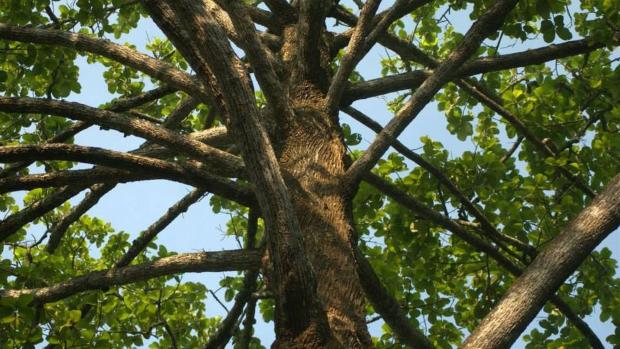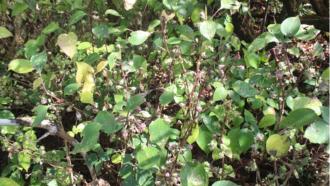
Photo : Purabi Deshpande / Research Matters
If pictures say a thousand words, what would a collection of hundreds of pictures say? A fascinating chronicle indeed! That’s what Dr. Navendu Page’s newly launched book is.
Dr. Page, a botanist and a plant ecologist who recently completed his PhD from the Centre for Ecological Sciences, Indian Institute of Science, Bangalore, has taken his passion for exploring, photographing and documenting plants from different parts of the country, to the next level by launching his photo-book titled ‘Photographic guide to the Endemic Woody Plants of the Western Ghats’. An outcome of more than 10 years of field work carried out across the Western Ghats, this book documents about 100 species of trees found in over 40 locations across the chain of mountains.
“There is no field guide available on the evergreen and endemic woody plants of the Western Ghats”, points out Dr. Page, “primarily because very few people have taken the effort to photographically document the vegetative and reproductive stages of these species”. This, he says, was a big motivation behind bringing out the book.
Woody plants are plants that produce wood as their structural tissues, like the teak and pine trees. They have xylem cells with cell walls made of cellulose and lignin. It is estimated that about 45-48% of the total species of plants found on Earth are woody plants. The Western Ghats, also called a biodiversity hotspot, has a sizeable number of woody plant species as of now, that are found nowhere else in the world (endemic). Dr. Page says that around 65% (~ 375-400 species) of the wet evergreen species of woody plants found in the Western Ghats, are endemic. However, Due to the lack of data and the rapid depletion of the evergreen forests, we know very little about how they look, their distribution, abundance and the threats that they face.
“I feel that it is important to know what we need to conserve. We should know what these species look like and where they are found. However, we don’t have sufficient information on these aspects”, remarks Dr. Page. This book, he believes, addresses these shortfalls in our understanding of endemic woody species by showcasing 100 species through the pictures of their leaves, flowers, fruits and features that serve as diagnostic features for identifying these species along with their geographic distribution maps, their elevation and habitat.
The other aspect of conservation is categorising and identifying those species that are at risk. Based on available data of each species, the IUCN (International Union for Conservation of Nature) classifies them as ‘least concern’, ‘near threatened’, ‘vulnerable’, ‘endangered’, ‘critically endangered’, ‘extinct in the wild’ and ‘extinct’. In the book, Dr. Page has listed about 24 such endangered and critically endangered species. However, he believes that the list is not exhaustive.
“Many of these endemic species had not been evaluated for their conservation status. We cannot prioritise species for conservation if we don’t know what their conservation status is”, asserts Dr. Page. “One of the important bits of information provided in this book”, he says, “is the proposed conservation status based on IUCN criteria. As a result of 5 years of data collected from field and other published sources, I have assigned a conservation status to these endemic species.”
So, who can benefit the most from all the curated information in the book? “This book is targeted at students, ecologists, wildlife biologists, practicing scientists and conservationists such as the Forest Department Officials/staff and people who can influence policies relevant to conservation of the threatened species and ecosystems of the Western Ghats. Besides these, this book would be useful to anyone who is passionate about wildlife and is interested in finding these species in the wild”, believes Dr. Page.
Funded by the Rufford Small Grant Foundation, this book also plays a major role in conserving what is left in the Western Ghats. “A book like this has the potential to create awareness on these species in the Western Ghats. There are some that are found in just one or two places and may disappear forever if we don’t take measures to safeguard them and their habitats. This book is prepared with a hope that it will serve as a valuable resource to anyone who is motivated to know more about these species and wants to take necessary actions for their conservation”, signs off Dr. Page.
So, interested in this book? You can write to Dr. Page directly on navendu.page@gmail.com or buy it online through Nature Conservation Foundation’s website on https://www.instamojo.com/NCF/book-endemic-woody-plants-of-the-western-gha/






